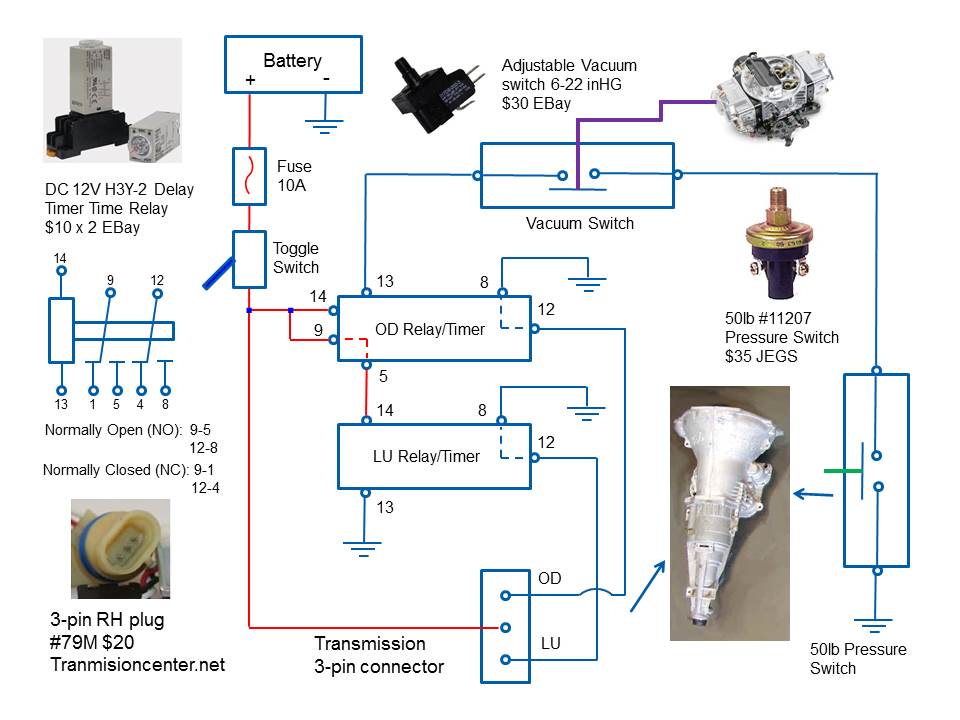Completely automatic, wanted my daughter to be able to drive it.
The control module automatically turns on/off the overdrive and lock-up for the transmission.
The 518 (46RH) is hydraulically controlled and uses 2 servos to enable the OD and LU.
The 3-pin connector on the transmission supplies the control voltages.
The center pin always has 12V power connected. The 2 outer pins are switched grounds. The front pin is the OD ground, the rear pin is the LU ground.
The module works according to the following sequence.
1) The 12V toggle switch supplies voltage to the relays and transmission center pin.
2) When the hydraulic pressure trips (50mph/adjustable) the pressure switch, ground is supplied to the vacuum switch. When speed is below 50mph, hydraulic switch opens, disabling OD.
3) When there is enough vacuum, the vacuum switch closes, providing the OD relay ground. Under heavy acceleration, vacuum drops, opens switch, OD is disabled.
4) When OD relay has ground and 12V, it waits 10sec, then supplies 12V to the LU relay and ground to the transmission OD pin, enabling OD.
5) Now the LU relay has 12V, it's already grounded. It waits the 10 sec programmable delay then provides ground to the transmission LU pin. So lock up doesn't occur until OD has been enabled and on for 10sec.
6) The programmable delays for both relays fix the situation when speed is fluctuating around 50mph. This would normally cause the OD to kick on/off, the 10 sec (programmable) delay stops this from happening.




















